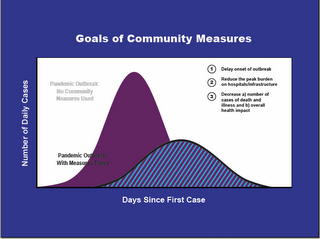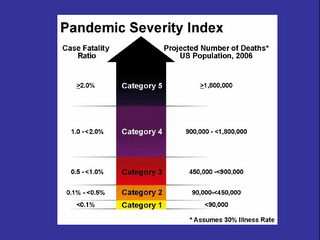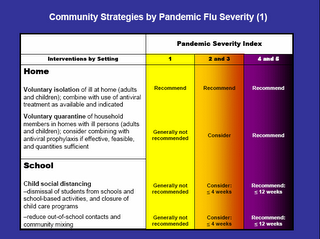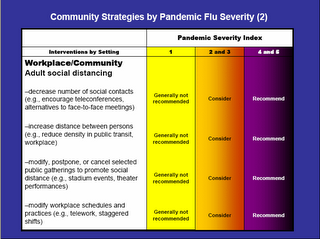# 392
Today’s 49 minute press conference from the CDC was used primarily to unveil their 108 page document entitled : Interim Pre-pandemic Planning guidance: Community Strategy for Pandemic Influenza Mitigation in the United States—Early, Targeted, Layered Use of Nonpharmaceutical Interventions which is available here for download in pdf format.
We’ve discussed NPI (Non-pharmaceutical Interventions) in this blog before, and after I’ve had time to read this new document in its entirety tonight, I’ll go into this plan in greater detail over the next day or so.
The press conference was interesting, however, and it can be heard online Here It requires Windows Media player to be installed on your computer. The conference wasn’t without technical difficulties. It started nearly 10 minutes late, and about 45 minutes into it, my audio feed became garbled, then it was abruptly cut off. Attempts to log back in were unsuccessful. Apparently the conference ended only a few minutes later.
NPI’s are measures communities and individuals can take when there are no drugs or vaccines available to help mitigate the effects of a pandemic. This document basically is an admission by the CDC that should a pandemic erupt, at least for the first six months, that is the situation that many of us will face.
It is highly unlikely that the most effective tool for mitigating a pandemic (i.e., a well-matched pandemic strain vaccine) will be available when a pandemic begins. This means that we must be prepared to face the first wave of the next pandemic without vaccine and potentially without sufficient quantities of influenza antiviral medications. In addition, it is not known if influenza antiviral medications will be effective against a future pandemic strain. - CDC NPI Plan
Certainly, this statement will come as no surprise to the readers of this, or any other flu blog, or denizens of the flu forums. Our Strategic National Stockpile of Tamiflu is not only woefully inadequate for the task, right now; the efficacy of the drug is even questionable.

The hope is that the effects of a pandemic could be spread out over time through the judicious use of NPI strategies, softening the blow to healthcare services, and the economy.

The use of a Hurricane-like rating scale for a pandemic, where a 1918 or greater event is a Category 5 viral storm, and the relatively mild pandemics of 1957 and 1968 are Category 2 events, would assist communities in planning.


Based on the Severity index (Category 1-5), individual communities could then tailor their responses accordingly. As shown in these two graphics, a Category 1 pandemic would entail little if any response. A Category 4 or 5 pandemic would require a wide ranging, and layered response.
As stressed repeatedly, these are Interim proposals, subject to change. There are of course lots of weak spots in this report, lots of unanswered questions. I'm sure it will be picked apart over the next few days, and viewed with a critical eye by many. As time permits, I'm sure I'll have a go at it myself. In the meantime, the pdf file is a worthwhile download.
An interesting side note, in the Q&A session after the presentation, a reporter asked whether citizens should be stockpiling masks, Tamiflu, and how much food?
Dr. Gerberding waffled a bit on all three questions. On the masks, she said it was complicated, and they were still studying the issue. She then said they weren’t currently recommending that individuals purchase their own Tamiflu, but as supplies eased up, they would revisit that issue. And she didn’t address the food storage quantity question at all.